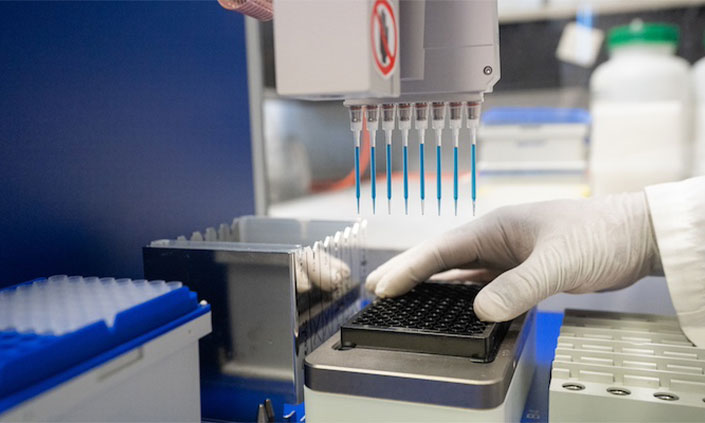APAF helps spot childhood concussion biomarkers
Macquarie University's APAF support research identifying a blood protein that could detect children at risk of long-term concussion complications.

Macquarie University’s Australian Proteome Analysis Facility (APAF) recently played a key role in identifying a blood protein that could help detect children at risk of long-term complications following a concussion.
The study, led by the Murdoch Children’s Research Institute and published earlier this year in the Journal of Neurotrauma, found that children who experienced concussion symptoms for more than two weeks had significantly lower levels of a blood protein called Alpha-1-ACT.
Co-author Thiri Winn, a scientist at APAF since 2005, said that APAF used highly specialised equipment including mass spectrometry to analyse blood samples from children who had suffered a concussion while playing sports.
The facility’s multidisciplinary team and advanced instrumentation allowed them to identify and quantify the proteins present in the samples.
“Proteomics is the study of proteins, and proteins are everywhere – in our body, in plants, in food. At APAF we work across a broad spectrum of different projects, like the collaboration with Murdoch Children’s Research Institute, where we were able to help them by analysing blood samples from injured children,” says Ms Winn.
APAF’s expertise in sample preparation and mass spectrometry is crucial for accurate protein analysis, she says. “Sample preparation has to be precise and that’s where our expertise comes in – identifying the best preparation method, solvent and so on, for each different sample.”
The facility serves a diverse range of clients, from universities and research institutes to pharmaceutical companies and the food industry.
“We have clients from Curtin University, the University of Wollongong, Queensland Brain Institute, Macquarie Medical School, and even international clients from Malaysia and America,” Ms Winn said.
APAF’s services involve protein identification, quantification, and characterisation. “Sometimes clients just want to know what’s in a sample, which is one of the easiest things we do,” Ms Winn says. “We have databases that can help us identify the species or the specific proteins present in a sample.”
Meena Mikhael is the Facility Manager of APAF, in a role which combines his omics and biomolecular research management expertise, and his commercial experience in the highly regulated, competitive and fast paced agrochemical testing and analytical instrumentation industries.
The facility houses a remarkable array of state-of-the-art equipment, including a range of million-dollar-plus mass spectrometers.
These analytical instruments can identify the different components in a sample by converting the molecules into ions (charged particles) and separating them based on their mass-to-charge ratio, so researchers can identify the molecular mass and chemical structure of the original molecules in a compound.
Mass spectrometry can also identify the different proteins present in complex biological samples by comparing treated samples with data from protein sequence databases.
“Technology is always improving, and our goal is to keep pushing the limits of these technologies to answer the most challenging research questions,” Mr Mikhael says.
“APAF has been one of Australia’s leading biological mass spectrometry facilities for over two decades.”
A range of other high-end instruments, including a mass photometer and a pipetting robot, can facilitate a huge range of biological and biochemical tasks.
“Our scientists work across a very broad range of sample types, from cell lines, protein extracts and tissues, to synthetic macromolecules and purified biomolecules, and can help researchers and industry clients with experiments and other tasks ranging from experimental design, sample preparation, data acquisition and analysis, to reporting and manuscript review,” says Mr Mikhael.
The Australian Proteome Analysis Facility is hosted by Macquarie University and supported by Bioplatforms Australia through funding from the Australian Government National Collaborative Research Infrastructure Strategy (NCRIS).
Dr Belinda Schiller, who heads Macquarie’s Analytical & Fabrication Facility (including APAF), says the group’s work in proteomics has far-reaching implications, from advancing medical research to improving food production and quality control, and even assisting in criminal investigations.
“The recent investigation into concussion biomarkers is just one example of the wide range of life sciences work done at APAF in proteomics, a field that plays a key role in helping us understand the building blocks of life,” says Dr Schiller.
Balaclava Rd, North Ryde, Macquarie University
NSW 2109 Australia